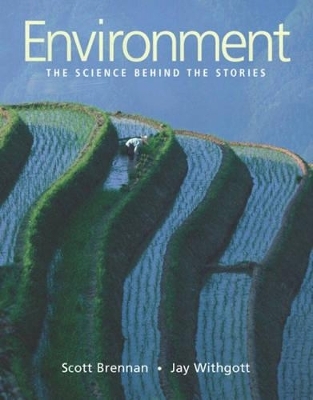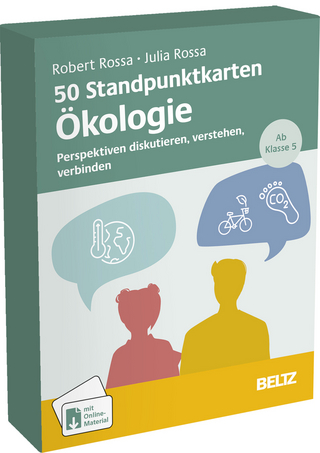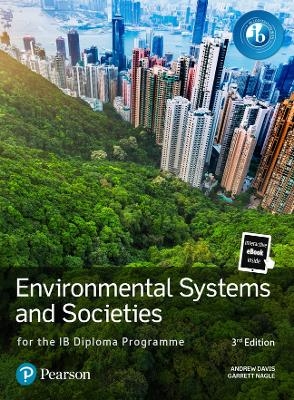
Environment
Pearson Education (US)
978-0-8053-4425-7 (ISBN)
- Titel erscheint in neuer Auflage
- Artikel merken
Environment: The Science Behind the Stories is an introductory textbook that uses case studies and real data to engage students and show them the role of science in solving pressing environmental problems. The book integrates case studies into the body of the text to capture students' attention and provide them with a contextual framework for the science they are learning. With only 21 chapters, Environment: The Science Behind the Stories avoids the encyclopedic approach of other textbooks on the market.
Scott Brennan teaches environmental science, policy, and journalism at Western Washington University's Huxley College of the Environment. He has also worked as a journalist, policy analyst, and environmental consultant. The recipient of a Duke University research fellowship in marine science, Brennan's accomplishments have been recognized by Washington State University, Western Washington University, and the Society of Professional Journalists. Jay Withgott is a science and environmental writer, and has written for a variety of journals and magazines including Science, New Scientist,Current Biology, Conservation in Practice, and Natural History. Holding an undergraduate degree in History and Studies in the Environment at Yale University, Withgott has authored nearly 20 scientific research papers and has taught labs in Ecology and other subjects while gaining masters degrees in Biological Sciences (University of Arkansas) and Ecology and Evolutionary Biology (University of Arizona).
I. FOUNDATIONS OF ENVIRONMENTAL SCIENCE.
1. An Introduction to Environmental Science.
Our Island, Earth.
The Nature Of Environmental Science.
The Nature Of Science.
Environmental Science And The State Of The World.
Sustainability.
2. Environmental Ethics and Economics: Values and Choices.
Culture, Worldview, And Our Perception Of The Environment.
Environmental Ethics.
Economics: Old Approaches, New Approaches, And Environmental Implications.
Central Case: The Mirrar Clan Confronts the Jabiluka Uranium Mine.
3. Environmental Policy: Decision-Making and Problem-Solving.
Environmental Policy: An Introduction.
U.S. Environmental Policy: An Overview.
Approaches To Environmental Policy.
The Environmental Policy Process.
International Environmental Law.
Central Case: San Diego's and Tijuana's Sewage Pollution Problems and Policy Solutions.
4. From Chemistry and Energy to Life.
Chemistry and the Environment.
Energy Fundamentals.
The Origin Of Life On Earth.
The Theory Of Evolution By Natural Selection.
Central Case: Bioremediation of the Exxon Valdez Oil Spill.
5. Ecology and Evolution: Populations, Communities, and Biodiversity.
Evolution As The Wellspring Of Earth's Biodiversity.
Units Of Ecological Organization.
Ecology On The Organismal Level.
Population Ecology.
Beyond Populations To Communities.
Humans And The Conservation Of Biodiversity.
Central Case: Striking Gold in a Costa Rican Cloud Forest.
6. Environmental Systems: Connections, Cycles, and Feedback Loops.
Earth's Environmental Systems.
How Environmental Systems Work.
Central Case: The Gulf of Mexico's "Dead Zone."
II. ENVIRONMENTAL PROBLEMS AND THE SEARCH FOR SOLUTIONS.
7. Human Population Growth.
Human Population Growth: Baby Six-Billion And Beyond.
Central Case: One-Child Policy.
8. Agriculture and Soil Formation, Degradation, and Conservation.
Soils: The foundation for feeding a growing human population.
Soil as a system.
Soil degradation: Problems and solutions.
Central Case: No-Till Agriculture in Southern Brazil.
9. Agricultural systems, Biotechnology, and the Future of Food.
The Race To Feed The World.
Pest Management.
Pollination: "Good" Insects, Unsung Heroes.
Genetic Modification of Food.
Preserving Crop Diversity.
Feedlot Agriculture: Livestock And Poultry.
Aquaculture.
Sustainable Agriculture.
Central Case: Possible Transgenic Maize in Oaxaca, Mexico.
10. Toxicology and Environmental Health.
The growth of environmental toxicology.
Toxicants in the environment.
Studying effects of toxicants.
Hazards to environmental health.
Risk assessment and risk management.
Philosophical approaches to environmental health.
Policy on toxicants.
Central Case: Alligators and Endocrine Disruptors at Lake Apopka, Florida.
11. Atmospheric Science and Air Pollution.
Atmospheric science.
Outdoor air pollution.
Indoor air pollution.
Central Case: The 1952 "Killer Smog" of London.
12. Atmospheric Function and Human Impacts on the Climate System.
Earth's hospitable climate.
Methods of studying climate change.
Climate change estimates and predictions.
The debate concerning global climate change.
Technological and political methods of emissions reduction.
Central Case: Rising Temperatures and Seas May Take the Maldives Under.
13. The Oceans: Natural Systems, Human Use, and Marine Conservation.
Oceanography.
Marine ecosystems.
Human uses and human impacts.
Emptying the oceans.
Marine conservation biology.
Central Case: Seeding the Seas with Marine Reserves.
14. Freshwater Resources.
Fresh water's movement and distribution on earth.
Freshwater ecosystems.
How we use water.
Fresh water depletion: the challenge of quantity.
Solutions to fresh water depletion.
Fresh water pollution: the challenge of quality.
Solutions to fresh water pollution.
Central Case: Plumbing the Colorado River.
15. Biodiversity and Conservation Biology.
Our planet of life.
Biodiversity loss and species extinction.
Benefits of biodiversity.
Conservation biology: the search for solutions.
Central Case: Saving the Siberian Tiger.
16. Land Use, Forest Management, and Creating Livable Cities.
Urbanization and the need for natural lands.
Our urbanizing world.
Forestry, land use, and resource management.
Agricultural land use.
Parks, reserves, and wildlands.
Creating livable cities.
Central Case: The Chicago-Area Forest Preserve System.
17. Nonrenewable Energy Sources and Their Environmental Impacts.
Sources of energy.
Fossil fuels.
Oil.
Coal.
Natural gas.
Environmental impacts of fossil fuel use.
Political and economic impacts of fossil fuel use.
Nuclear power.
Central Case: Oil or Wilderness on Alaska's North Slope? 18. Renewable Energy Sources.
Renewable energy sources.
Biomass energy.
Hydroelectric power.
Solar energy.
Wind energy.
Geothermal energy.
Tide and wave energy.
Hydrogen fuel and fuel cells.
Energy conservation.
Central Case: Iceland Moves Toward a Hydrogen Economy.
19. Waste Management.
Types of waste.
Municipal solid waste.
Industrial solid waste.
Hazardous waste.
Sewage treatment and wastewater management.
Central Case: Dump-Dwellers and Manila's Garbage Crisis.
20. Sustainable Solutions.
Sustainable development.
Growth versus progress.
Sustainable solutions.
Precious time.
Central Case: The World Summit in Johannesburg.
| Erscheint lt. Verlag | 7.4.2004 |
|---|---|
| Verlagsort | Upper Saddle River |
| Sprache | englisch |
| Gewicht | 1880 g |
| Themenwelt | Sachbuch/Ratgeber ► Natur / Technik |
| Naturwissenschaften ► Biologie ► Ökologie / Naturschutz | |
| Technik ► Umwelttechnik / Biotechnologie | |
| ISBN-10 | 0-8053-4425-X / 080534425X |
| ISBN-13 | 978-0-8053-4425-7 / 9780805344257 |
| Zustand | Neuware |
| Haben Sie eine Frage zum Produkt? |
aus dem Bereich


